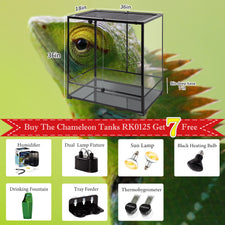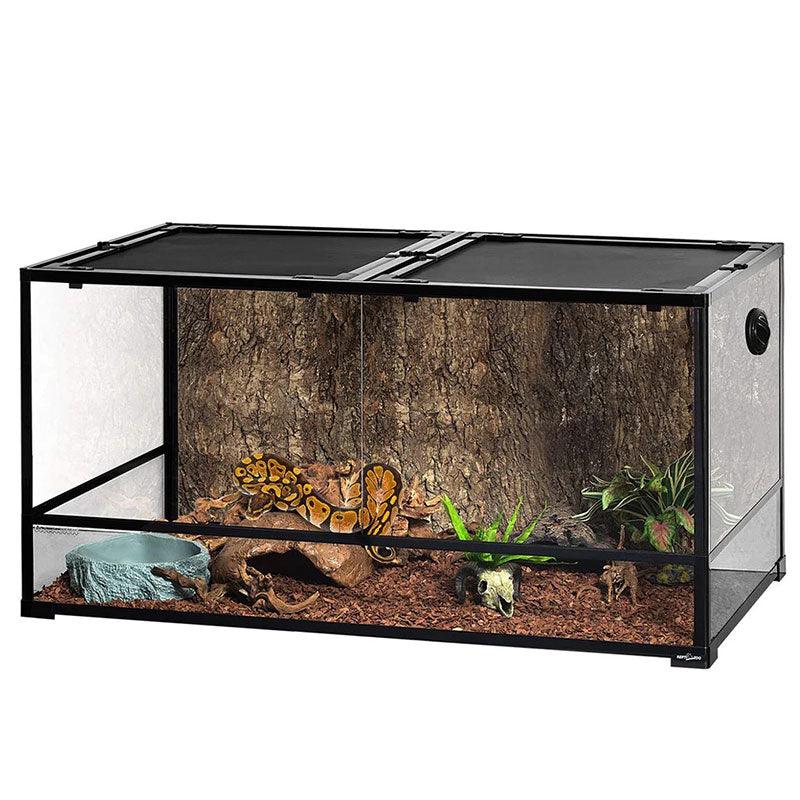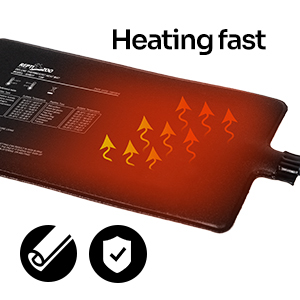The world of reptiles is full of different types of species, and each has its own unique features and attractive qualities. Among these creatures, one of the extraordinary specie is the King snake which reigns supreme with its remarkable adaptability and regal presence. King snakes display commanding disposition and striking patterns that hold a special place in the heart of snake lovers. In this blog, we will look at the word of king snakes and explore their characteristics, behavior, and their requirements for a healthy life.
Appearance and Patterns
The king snake (Lampropeltis sp.) is basically found in Central and North America. King snake is a non-venomous snake and has contrasting and vibrant colors, this snake has a bold pattern and glossy skin. The most common pattern you will find is the band of black and white and yellow or cream. However, many other subspecies have different colors like brown, red, and gray. There are almost 45 recognized subspecies of king snakes. This marking in king snakes mimics those of venomous coral snake and act as a form of protective mimicry.
Ideal King Snake Enclosure
In the wild king, snakes live in diverse environments like grasslands, forests, deserts, and urban areas. Their adaptability to live in different climates and terrain makes them a very easy snake to care for. When you are selecting a snake enclosure whether you are a beginner or a seasoned snake keeper you have to provide the right environment for their good health and well-being. Some guidelines to select the ideal king snake enclosure are:
Size and Space
King snakes love to explore different environments and do adventures. So it’s essential to provide them with an enclosure in which they can do all of their movements. A general about snake enclosure is selecting a habitat that is according to the length of the snake and one-third to one-half its length in width. In the case of an adult king snake, a 90 to 120-gallon snake tank is recommended. When choosing between glass and wooden vivariums, more and more enthusiasts support glass snake tank because they have a better ornamental effect as well as a great insulator of heat and control temperature in different situations.
Substrate
There are many commercially available substrates and bedding for reptiles in the market. However, it is important to not use any type of litter related to cats, oily woods, and chemically treated substrates. For a general guideline if a substrate is visually ok and has no odor coming from it then it is generally safe to use. When feeding your king snake always use a separate container because there are chances of ingestion of substrate. The recommended substrate for king snake enclosure is aspen bedding or soil as they are safe and suitable for the snake.
Decoration
King snakes are terrestrial beings and they don’t exhibit climbing behavior but if you want to make the snake enclosure more natural then place some wood into the vivarium and let them indulge in the behavior comfortably.
To improve natural aesthetics, you can also add artificial plants to the king snake enclosure. These plants not only improve the appearance but also provide visual barriers and different hiding spots. This promotes a sense of security in them, the best practice is to place a hiding spot at each corner of the snake enclosure and let them move freely without feeling vulnerable.
Temperature Requirements
We humans are endothermic and our bodies can regulate their temperature on their own. However, king snakes don’t have this ability and they need external heat to regulate their body temperature. For this reason, they move between different areas to achieve the temperature balance. In the wild, the king snakes often get warmth by basking in the sunlight. In captivity, you can provide them warmth by using flood light halogen bulbs because of the warmth of the sun.
In the daytime, the king snakes need warmth so they will require a basking area in the enclosure. You can make this possible by putting a bulb at one end of the snake enclosure. The king snakes need a temperature of 85°F to 90°F in the basking area.
To replicate the environment in the wild the night temperature must be a little low. For these reasons, the basking lights should be off at that time. The night temperature should be around 80°F (27°C), this temperature can be maintained by using a heat mat. It radiates heat without producing light. To keep an eye on the temperature use a high-quality thermostat. The thermostat will automatically maintain the temperature and you don’t have to worry about that.
Humidity Requirement
Maintaining proper humidity levels is important for the good health of the king snake. Normally a humidity level of 40-60% is recommended, the humidity level can be measured with the level of probe hygrometer that is placed inside the snake enclosure. If the humidity level stays high or low for a long time it may have a negative impact on the health of your king snake. However, the humidity level may vary within the snake enclosure with higher humidity on the cool end and lower on the warm end. The optimal humidity level also varies according to the species of the king snake.
If you want to increase the humidity level in the snake enclosure use a pressure sprayer to mist as much needed. Additionally, sphagnum moss should be placed inside the cooler area of the enclosure to create a humid environment. Always keep in check the moss to prevent the growth of mold. Another common method to maintain humidity is by placing leaf litter on top of the substrate.
Feeding
In the wild, King snakes eat a diverse diet including a range of small animals and birds like mice and rattlesnakes that they can eat whole. However, in the enclosure, the recommendation is to feed them mice as they are very easily available. You can also feed them reptile food or thaw frozen mice. Don’t feed them live adult mice as they are a risk to your king snake as they can cause injury.
When feeding the mouse to your king snake, you will see a noticeable lump in their body and it will be larger than the regular diameter. It is advised not to handle the king snake when the lump is still visible and only handle it when it is digested and comes back to normal diameter. Feeding your king snake once a week is best to maintain their health, but if your snake likes to eat more then feed them twice a week. You should always provide access to a large bowl of water from which they can drink and curl up when they like.
Handling Your King Snake
When you bring your king snake home give him some time to settle in. They usually take around two weeks to adjust and during this time try not to handle them until your pet start eating on his own and moving stress-free. Once you feel that your snake is moving freely then he is ready for handling. Start the process in short sessions just like a relationship and your handling session should not last more than 5 minutes at the start and then return the snake to his enclosure. This approach will help your snake learn appropriate behavior during handling. Once your king snake gets used to this routine, you can increase handling duration. Keep in mind that handling should be done once a week and not more than that.
During the handling process use gentle hands to handle your king snake, instead of grabbing the snake allow him to crawl onto your hands voluntarily. Lift the snake with both hands and provide as much support as possible to its body. King snakes tolerate handling very well so stay calm and do all the processes slowly.
Cleaning the king snake enclosure
It is important to clean the snake enclosure substrate and it gives a great opportunity to completely clean the whole enclosure. Some general cleaning steps are
- Remove the king snake from the enclosure and put it in a temporary container that must be escape-proof. Make sure that the containers have a hiding spot, a water bowl, and a thin layer of old substrate to make your snake comfortable.
- Start the cleaning process by taking out all the decorations and substrate from the enclosure.
- Vacuum the whole enclosure so that any remaining particles also get removed.
- Use a reptile-safe disinfectant and spray it on the walls and floor of the enclosure. leave it for the recommended time as mentioned on the product.
- Also soak hides, rocks, branches, and other decorations in the disinfectant so that it can get clear of all the debris. Similarly, follow the recommended time for soaking.
- If you want to clean more deeply then rinse the enclosure with water to remove any kind of residue of disinfectant. Let the enclosure dry completely.
- Add new substrate in the enclosure and make sure it has a uniform moistened composition not overly dry or wet.
- Place the decoration back to their previous positions because king snakes are very sensitive to changes. So, always put everything back in its original position.
- Finally, put your snake back in a fresh and clean enclosure setup.
You may refer to this article: How To Clean A Bearded Dragon Tank?
FAQS
Do king snakes need supplements?
King snakes do not need minerals, vitamins, or supplements, however, using them occasionally will prevent any nutritional deficiencies. In order to provide nutritional supplements you can follow the procedure of dusting the supplement on the prey before thawing it and then serve that to your king snake.
When to take your king snake to the vet?
The recommendation for veterinary checkups is after every few months to ensure their health and well-being. A reptile veterinarian can give the perfect advice after a proper examination of your pet snake. However, there are some important signs that you keep your eye on like weight loss, abnormal feces, loss of appetite, respiratory issues, swelling, skin lesions, and behavioral changes. If you found any of these signs then consult your vet to get the best treatment for your king snake.
Are king snakes poisonous?
No, they are not poisonous. They belong to the family Colubridae, a major part of the colubrids are non-venomous while some are mildly venomous but the king snakes are not poisonous or venomous to humans. They use the constriction method to kill their prey mainly birds, mammals, amphibians, and reptiles. King snakes are very powerful and have muscular bodies and they use their ability to kill other snakes even the venomous ones. They don’t possess any threat to humans in terms of bits but it is always advised to handle the snakes with caution to avoid any kind of injury.
How long do king snakes live?
King snakes have a very long life span and it depends on the factors like diet, genetic condition, habitat, and overall care. The average age of king snakes is 15 to 20 years in captivity if proper care is provided. However, some individual snakes are reported to live up to 30 years.
How to get a king snake?
It is very easy to get a king snake, you just have to reach out to a reputable breeder who has a specialty in king snakes or by getting in touch with vendors who have a great range of reptiles. Local pet stores that deal in reptiles can also provide king snakes. Furthermore, some online retailers can also give the convenience of getting a king snake from your home. However, you should choose a reputable seller by checking their reviews. Always prioritize a healthy snake and for that select a reputable breeder.
Conclusion
King snakes have very fascinating and vibrant colors and they have docile nature. They are non-venomous and with proper care including a balanced diet, suitable enclosure, and proper veterinary check-ups your king snake can thrive and enjoy a healthy life. However, it is important to search for their care requirements and meet them before getting a new snake.











